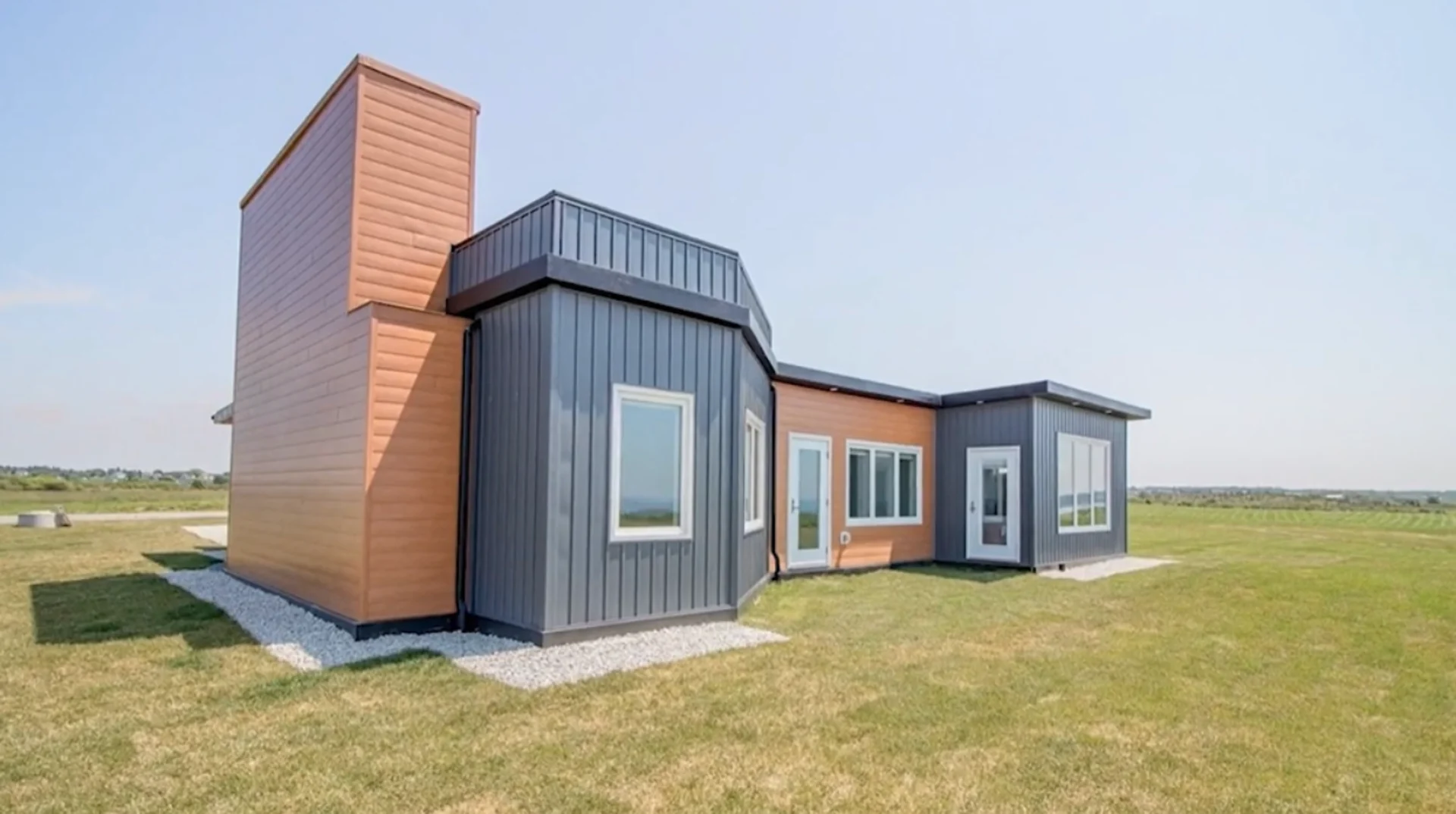
Plastic homes: These could solve our housing shortage and waste problem
The Weather Network's new series, Building Better, delves into the fresh and inventive approaches people and businesses are adopting to construct in response to our current climate challenges. In this episode, reporter Michael Vann heads to Lloydminster, Alta., to explore homes made from recycled plastic bottles.
Anyone who knows me knows I love to stay hydrated! When I travel for production shoots, I typically bring a reusable water bottle to minimize my plastic consumption and waste. As luck would have it, on a rather cold January morning in Alberta, I found myself on my way to a long shoot day without my trusty bottle. Normally, I would be frustrated that I had been forgetful. This day was different. I stopped at a convenience store, picked up a big plastic bottle of water, and went on my way to see what could happen when humans set out to find a creative solution to a big problem.
I met up with the team behind Ecoplast Solutions, a revolutionary green design and manufacturing business that builds houses from recycled plastic bottles. Their business started in 2020 when partners Kelly Rogers and Jean-Marc Dentremont teamed up to find a new way to use foam cores created from recycled plastic. The result is a unique new way of building strong, efficient, durable, and even affordable homes.
Plastic bottles that were first used for things like soda are recycled, shredded, and then put through a melting and extrusion process to create tiny pellets. From there, they are converted into a lightweight foam core material that the team at Ecoplast uses as the walls and roofs of new homes. They are completely sealed with a fibreglass process, and the result is an inorganic, monolithic structure ready to stand the test of time.
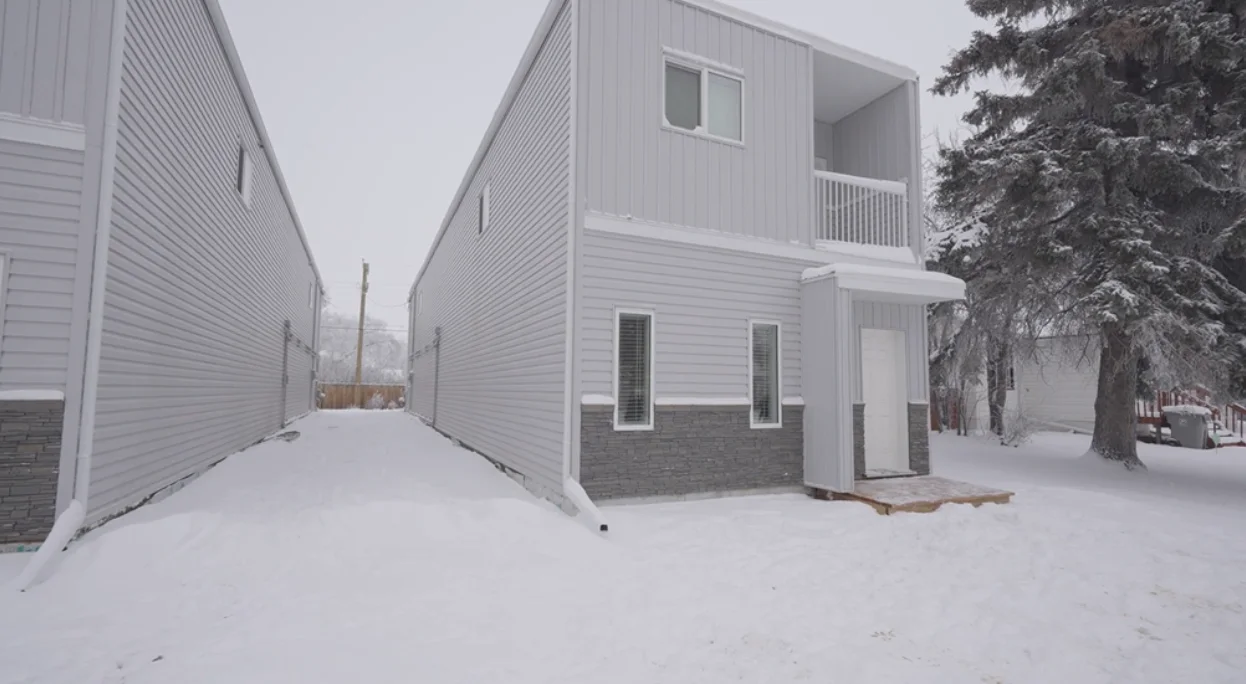
A single family home can use up to a million bottles that otherwise would’ve likely ended up in landfills or our waterways. (The Weather Network)
SEE ALSO: Rammed earth homes see a sustainable resurgence in Canada
Each square foot of the nearly 6-inch foam core panels uses about 192 recycled bottles. A single-family home can use up to a million bottles that otherwise would’ve likely ended up in landfills or our waterways. The panels are readied at the factory in Lloydminster before being flat-packed and typically constructed in just a few days. There are even smaller modular units that can be completed and transported to your land.
The homes are extremely energy efficient. The company says the structural insulated panels produce an effective R-30 value with ZERO thermal bridging, which makes them an excellent material to achieve a net-zero home.
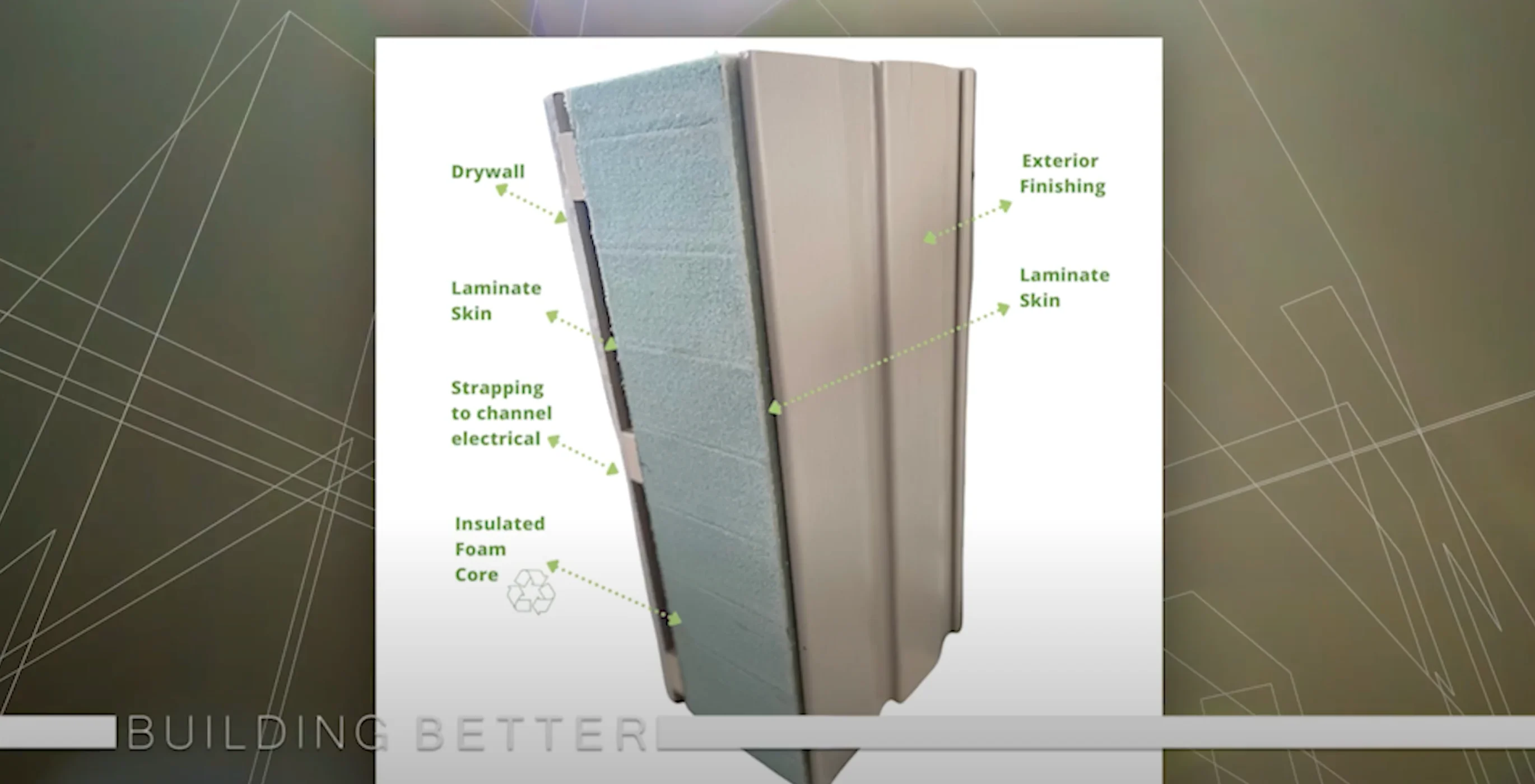
A look into how the structural insulated panel is constructed. (The Weather Network)
The panels have been put to the test when it comes to extreme weather conditions. They were proven to withstand a sustained wind force of 326 miles per hour; twice the strength of a Category 5 hurricane in an independent test. The durability doesn’t stop there; the new technology safeguards homes against storms, floods, heatwaves, extreme cold, and fires. In fact, the only real enemy of the plastic panels is UV rays. A simple paint job with U-V blocking properties ensures your home is protected from all elements.
For the team at Ecoplast, it’s about more than just the construction process. They’re on a mission to save the environment by promoting the reuse of plastic waste to avoid sending recoverable plastics to landfills. Less than 9 percent of our world is circular, meaning the majority of all materials the world consumes are either wasted or lost. If not another plastic bottle were sold today, there would still be enough plastic for Ecoplast to build 3,500 homes a year for the next four decades. However, there’s really no end in sight to single-use plastic.
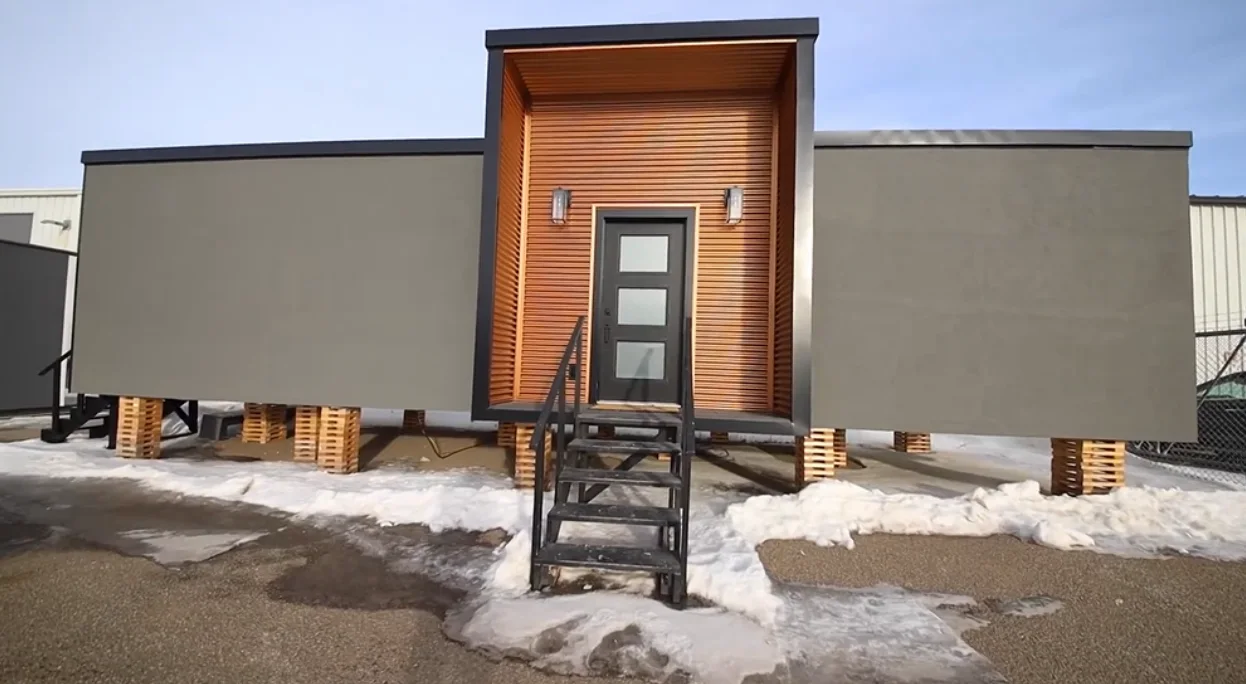
The team at Ecoplast Solutions says if not another plastic bottle were sold today, there would still be enough plastic for them to build 3,500 homes a year for the next four decades. (The Weather Network)
We filmed this episode inside a brand new duplex built by Ecoplast in Lloydminster. Truthfully, it’s hard to tell there’s any difference from a traditionally built home. It was a comfortable, quiet, and beautiful living space. But what truly sets a home like this apart is what you don’t see.
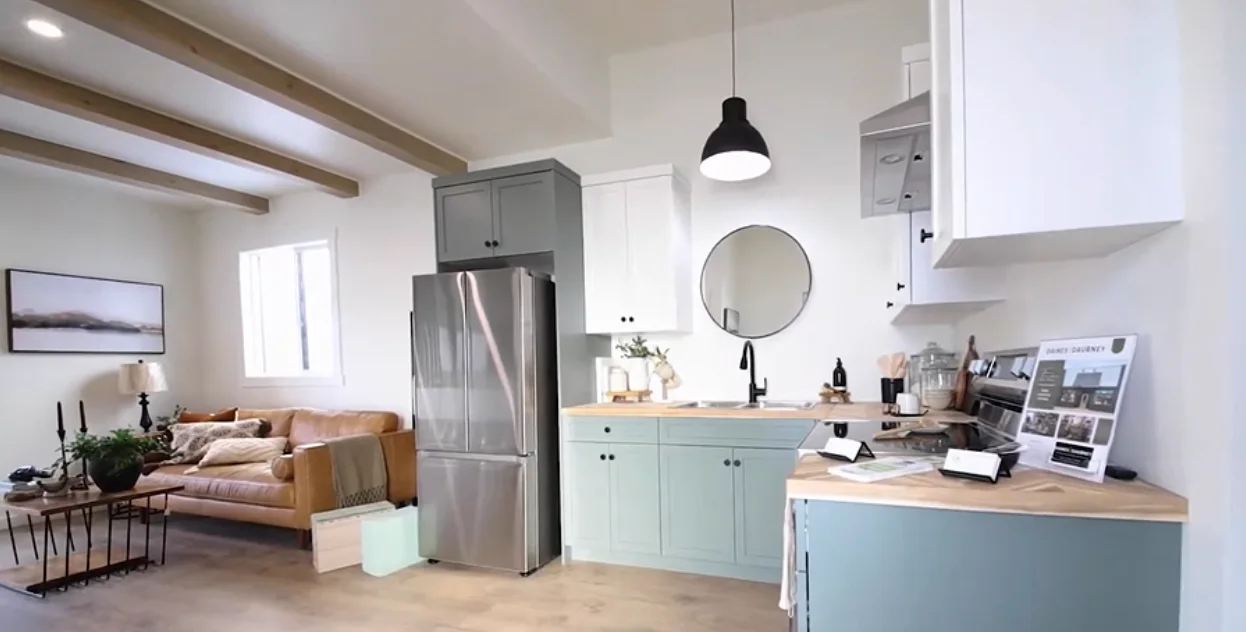
A look inside one Ecoplast Solutions-built home. (The Weather Network)
The ingenuity that exists within the walls will most certainly fill any homeowner with pride in helping to tackle the plastic problem while building better for their family’s future.
After the shoot was wrapped, I felt more hopeful as I dropped my plastic water bottle into the recycling bin. I sent a little wish out into the universe that one day soon that bottle would make its way into the walls of a very deserving family.
To learn more about these revolutionary homes, watch the video that leads this article.
Missed an episode? Catch up, here!












